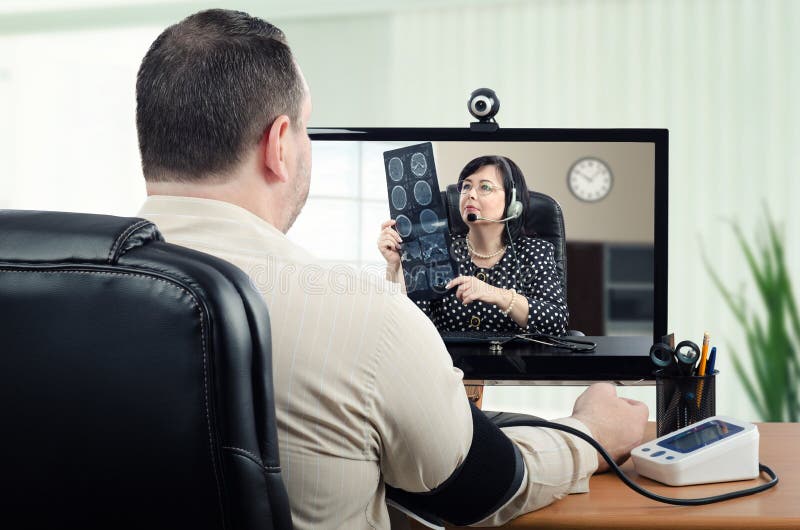Finest Teledoctors Systems for Virtual Wellness Consultations
Teledoctors: Bridging the Gap In Between People and Medical Care Providers
The appearance of teledoctors represents a considerable change in the health care landscape, supplying services to enduring accessibility problems encountered by patients and suppliers alike. By incorporating telemedicine into conventional techniques, medical care systems can reach remote and underserved populaces, giving crucial medical appointments without the obstacles of distance and travel.
Increase of Telemedicine

The increase of telemedicine is likewise fueled by the need for cost-effective healthcare. Medical care systems around the world are under stress to minimize costs while preserving quality treatment, and telemedicine supplies a feasible option. By reducing the need for physical visits, telemedicine lowers overhanging expenses for healthcare centers and eventually lowers the financial worry on individuals.
Furthermore, the COVID-19 pandemic acted as a stimulant, speeding up the adoption of telemedicine techniques. Social distancing steps and the need to lessen exposure threat required a change in the direction of remote appointments, triggering regulatory bodies to sustain and adapt telehealth solutions. This shift has not just proven telemedicine's efficiency however additionally its prospective to advance as a staple element of modern-day health care systems.
Advantages for Clients
As telemedicine remains to reshape medical care delivery, people stand to acquire dramatically from this change. Mostly, telemedicine enhances availability, allowing individuals in underserved or remote areas to seek advice from doctor without the demand for comprehensive traveling. This is specifically advantageous for people with mobility issues or those residing in country areas where healthcare facilities could be limited. Telemedicine also provides individuals the ease of receiving medical guidance and therapy from the convenience of their homes, lowering the time and cost related to traveling to a health care center.
Moreover, telemedicine sustains connection of treatment by assisting in normal follow-ups and tracking, which are vital for handling chronic conditions. Patients can conveniently set up visits and gain access to healthcare services outside typical workplace hours, fitting their busy lifestyles. This adaptability causes enhanced client engagement and adherence to therapy plans, potentially causing far better health and wellness outcomes.
In addition, telemedicine can assist reduce the risk of infection transmission, a problem increased by the COVID-19 pandemic. By minimizing the demand for in-person sees, clients can avoid congested waiting rooms and reduce direct exposure to transmittable health problems. Inevitably, telemedicine encourages people by providing prompt, reliable, and personalized medical care services.
Benefits for Carriers
For doctor, telemedicine uses significant benefits that enhance the effectiveness and reach of their technique. By leveraging digital modern technology, companies can expand their services to a wider group, including those in underserved or remote areas. This not only relieves geographical barriers however additionally optimizes individual retention and procurement by making healthcare a lot more accessible.
One best site more secret benefit is the reduction in overhead expenses. With telemedicine, the demand for physical space decreases, enabling carriers to reduce genuine estate and operational expenses. Moreover, telemedicine promotes far better time management by decreasing the requirement for permitting and commuting for more flexible scheduling. This versatility can result in boosted person appointments per day, thereby increasing income capacity.
Telemedicine additionally cultivates an extra collective atmosphere for health care service providers. teledoctors. It enables seamless sharing of person details amongst experts, improving analysis precision and treatment outcomes. In addition, electronic platforms can integrate with digital health and wellness records (EHRs), boosting information accuracy and streamlining management jobs
Furthermore, telemedicine improves person contentment, which is vital for company credibility and success. By supplying hassle-free and timely treatment, suppliers can enhance person loyalty and engagement, additionally strengthening the provider-patient partnership.
Overcoming Obstacles
While telemedicine uses numerous benefits for doctor, it also offers challenges that require careful factor to consider. One significant difficulty is ensuring data personal privacy and safety and security. As person information is transferred electronically, the danger of information blog breaches boosts, demanding robust cybersecurity steps. Doctor have to abide by rigid laws like HIPAA to protect delicate details, thereby needing financial investment in safe and secure platforms and continuous team training.
Another obstacle is the electronic divide, which can impede accessibility to telemedicine solutions. Not all clients have equal access to the required innovation or web connectivity, especially those in country or underserved locations. This variation can intensify existing health care inequalities, making it vital for carriers to discover different options, such as collaborations with neighborhood organizations, to bridge this gap.
Furthermore, there are constraints in performing physical exams from another location. Specific conditions require in-person analysis, highlighting the demand for a hybrid model that incorporates telemedicine with typical sees. Suppliers should navigate these obstacles by establishing procedures to identify when telemedicine is ideal and guaranteeing seamless transitions in between online and in-person treatment.
Future of Health Care
The future of medical care is positioned for a transformative evolution, driven by the fast assimilation of technology and development. This not just boosts patient benefit however additionally increases access to healthcare, especially in underserved and country locations.
Expert system (AI) and artificial intelligence are also set to play critical functions. These innovations can examine substantial quantities of information, providing predictive insights into patient health, improving diagnostic accuracy, and personalizing treatment plans. AI-driven tools can enhance doctor' abilities, resulting in more informed decision-making and better client outcomes.
Additionally, wearable innovation and Net of Medical Things (IoMT) gadgets are reinventing person engagement and positive health and wellness monitoring. These tools enable continuous health and wellness tracking, permitting very early discovery of possible issues and timely interventions.
As these innovations remain to breakthrough, they assure to develop an extra reliable, accessible, and patient-centric healthcare system, ultimately bridging the gap between patients and doctor. - teledoctors
Conclusion
Teledoctors are transforming healthcare by significantly enhancing accessibility and performance via remote appointments. This innovation supports people in underserved locations by providing timely clinical guidance without needing physical sees, hence enhancing patient interaction and continuity of care. Healthcare providers take advantage of more effective time administration and enhanced cooperation possibilities. In spite of challenges such as technical obstacles and regulatory concerns, the future of healthcare shows up progressively inclusive and reliable due to the assimilation of telemedicine into typical care versions.

As telemedicine proceeds to reshape health care delivery, clients stand to obtain considerably from this change. Mostly, telemedicine enhances availability, permitting clients in underserved or remote locations to speak with health care providers without the requirement for considerable travel. Telemedicine also uses people the convenience of getting clinical suggestions and treatment from the comfort of their homes, minimizing the time and price linked with traveling to a healthcare facility.
Eventually, telemedicine equips people by providing timely, efficient, and customized directory health care services.